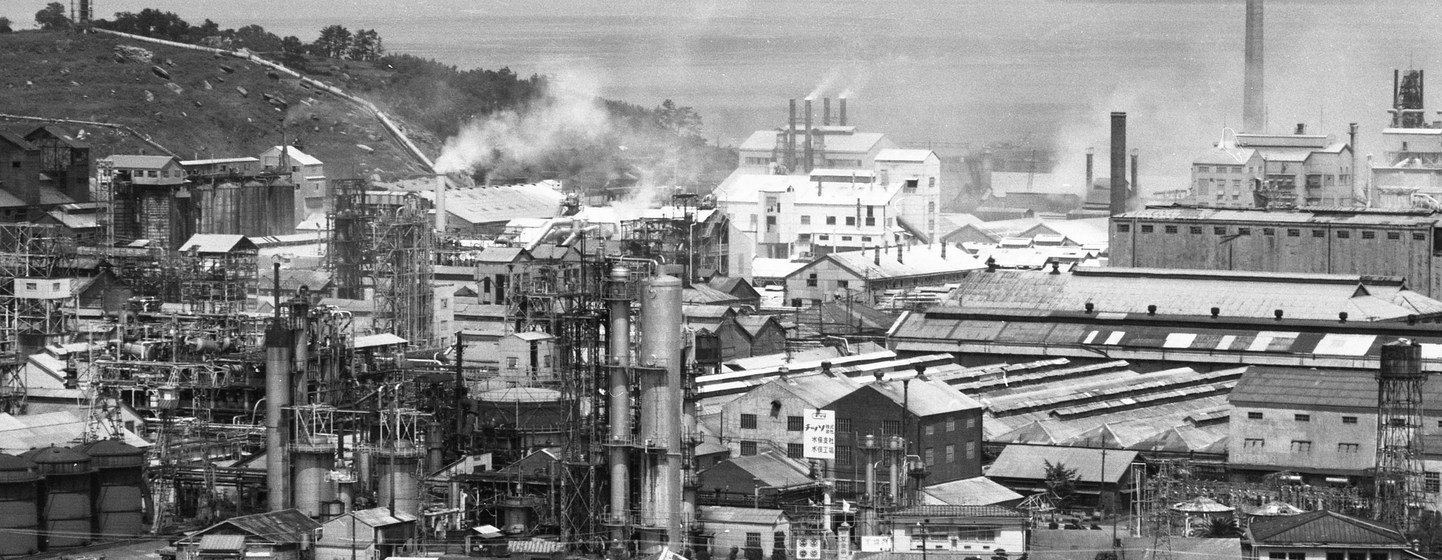Why Was Minamata Bay Poisoned by Mercury? The Minamata Bay disaster is one of Japan’s most infamous environmental tragedies, largely caused by the release of methylmercury into the waters of Minamata Bay, which led to severe and widespread mercury poisoning. The event, which unfolded from the 1950s through the 1970s, stands as a stark reminder of the devastating consequences of unchecked industrial pollution and corporate negligence.
The Source of Mercury Contamination
The root of the disaster traces back to the Chisso Corporation, a major chemical company based in Minamata, Japan. Chisso was producing acetaldehyde, a chemical used in plastics, at a plant located near Minamata Bay. The manufacturing process involved mercury, which was used in the production of acetaldehyde. From the 1930s onward, the Chisso factory began discharging mercury-laced wastewater directly into Minamata Bay. Over the years, the discharge continued without proper waste management, allowing methylmercury, a highly toxic form of mercury, to accumulate in the water and the marine life.
Despite early signs that fish and shellfish in the bay were becoming contaminated, the company persisted in its toxic waste dumping. Chisso’s disregard for environmental safety and the health of the local population set the stage for one of Japan’s most devastating public health crises.
Emergence of Minamata Disease
The first signs of the mercury poisoning appeared in 1956 when a series of strange neurological symptoms began appearing among the local population. People started experiencing tremors, numbness, vision problems, and severe ataxia (lack of muscle coordination). As the condition worsened, the victims would suffer from paresis (weakness), paralysis, and eventually death. It became evident that the source of the illness was mercury poisoning from the seafood in Minamata Bay, though at the time, the specific cause was not yet fully understood.
Initially, the outbreak was believed to be a mysterious new disease, but doctors soon began to link it to the consumption of contaminated seafood. Fishermen and their families, who relied on fish and shellfish from the bay for sustenance, were hit hardest. This condition, later identified as Minamata disease, was caused by the bioaccumulation of methylmercury in the local marine life. The mercury accumulated in the food chain, ultimately poisoning those who ate contaminated fish and shellfish.
The Role of Chisso Corporation
Chisso Corporation, the source of the mercury contamination, initially denied any responsibility for the health issues. The company continued discharging mercury into the bay for years, despite evidence of harm. It was not until 1968—more than a decade after the first cases of Minamata disease were identified—that Chisso finally admitted to its role in the disaster, though it took years of legal battles, protests, and mounting public pressure before the company fully acknowledged its responsibility.
In the meantime, the company’s refusal to stop its toxic discharges contributed to the worsening crisis. Mercury concentrations in the bay reached dangerous levels, and the disease spread to new victims. It was eventually confirmed that mercury had entered the local food chain through the marine life in Minamata Bay, poisoning thousands of people who consumed the affected seafood.
Legal and Social Response
As the scale of the disaster became clearer, there was a public outcry. Minamata disease victims, including both adults and children, began organizing in 1959 and established the Minamata Disease Victims’ Association to fight for compensation and recognition. However, the road to justice was long and challenging.
Chisso continued to deny responsibility, and the Japanese government hesitated to acknowledge the true cause of the disease. It wasn’t until the 1970s that the government officially recognized Minamata disease as a national health crisis. Legal proceedings took years, and the victims faced significant hurdles in obtaining compensation. Chisso eventually agreed to a settlement in 1973, but it wasn’t until 1995 that the company publicly apologized and made a full commitment to compensate victims.
The recognition of Minamata disease as a public health hazard was a crucial step toward providing financial support and medical care to the victims, but the legacy of the disaster continued to affect the community for decades.
Environmental Impact and Cleanup Efforts
The environmental damage caused by the mercury contamination was severe. Minamata Bay became heavily polluted, and the fish and shellfish in the area were rendered unfit for human consumption. As the mercury accumulated in the ecosystem, marine life was decimated, affecting the local fishing industry and the community that depended on it.
The Japanese government and Chisso eventually undertook efforts to clean up Minamata Bay, though recovery took many years. While there were improvements in water quality over time, the long-term environmental and social impacts remained profound. Local ecosystems struggled to recover, and the effects of mercury poisoning lingered in the community for decades.
Lasting Legacy and Reforms
The Minamata disaster had far-reaching consequences for Japan’s environmental policies. The tragedy highlighted the dangers of industrial pollution and the need for stricter environmental regulations. As a result, Japan introduced stronger laws to regulate the disposal of industrial waste and to protect public health from hazardous pollutants like mercury.
Additionally, the Minamata disaster led to global awareness of mercury pollution and its impacts. In 2013, the Minamata Convention on Mercury, a global treaty aimed at reducing mercury pollution, was adopted in response to the lessons learned from the disaster. This treaty reflects the commitment of countries worldwide to minimize mercury emissions and to protect the environment and public health from the toxic effects of mercury.
Final Words
Minamata Bay was poisoned by mercury due to the careless and negligent actions of the Chisso Corporation, which released toxic waste into the bay for decades. The consequences were catastrophic, resulting in thousands of cases of Minamata disease, which caused permanent neurological damage and even death among victims. The disaster led to years of legal battles, public protests, and social turmoil as the victims fought for recognition and compensation.
Today, Minamata stands as a powerful reminder of the destructive power of industrial pollution and the importance of safeguarding both human health and the environment. It also serves as a symbol of the resilience of the victims, whose struggle brought about critical changes in Japan’s environmental laws and helped inspire global efforts to curb mercury pollution.
Tulsi’s Healing Compounds: Phenols, Flavonoids, and Their Benefits | Maya



